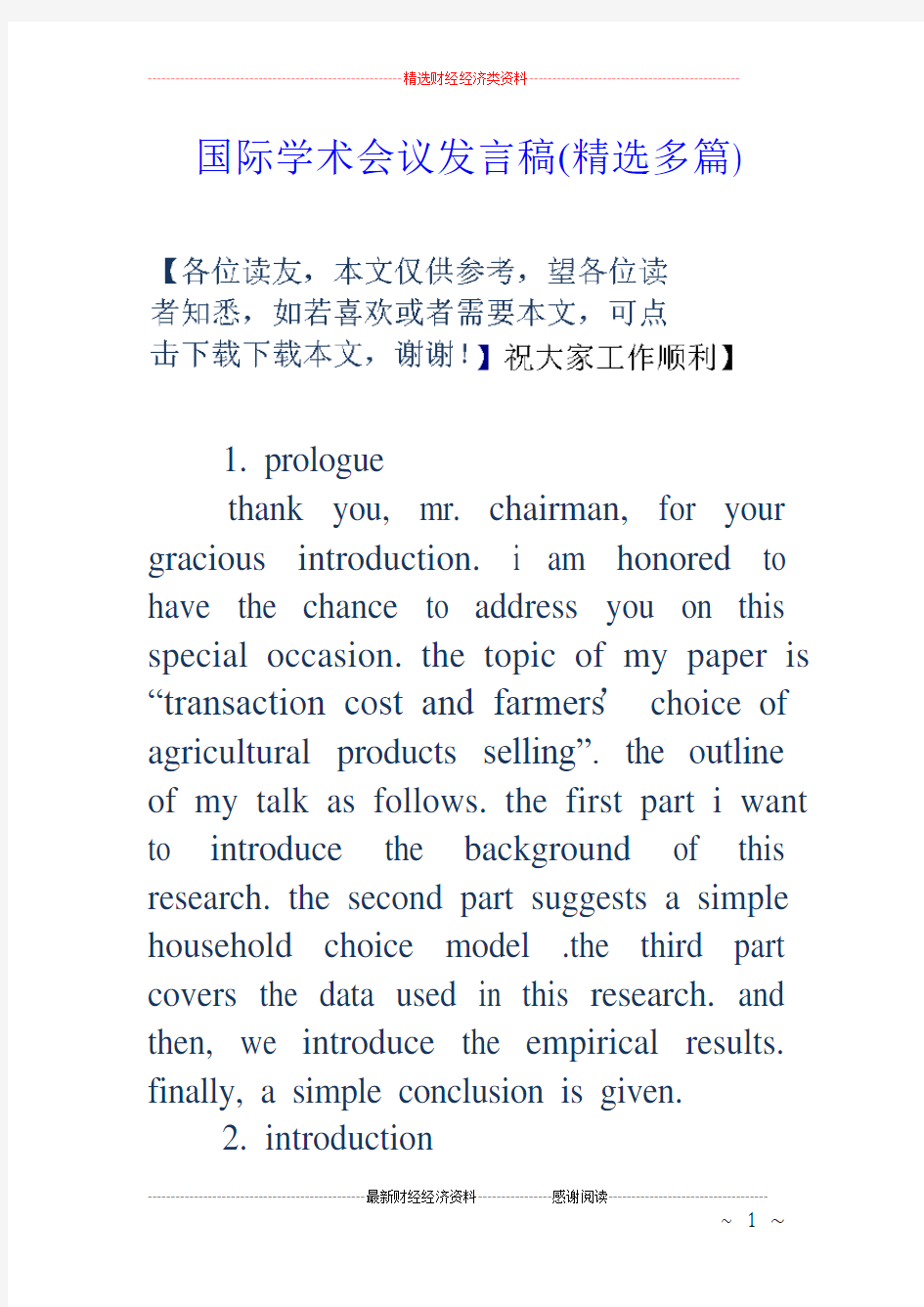
国际学术会议发言稿(精选多篇)
- 格式:doc
- 大小:71.50 KB
- 文档页数:26


国际学术会议发言稿(精选多篇)
1. prologue
thank you, mr. chairman, for your gracious introduction. i am honored to have the chance to address you on this special occasion. the topic of my paper is “transaction cost and farmers’choice of agricultural products selling”. the outline of my talk as follows. the first part i want to introduce the background of this research. the second part suggests a simple household choice model .the third part covers the data used in this research. and then, we introduce the empirical results. finally, a simple conclusion is given.
2. introduction
well, let’s move on the first part of this topic .the motivation of this work like this. institutional economics posits that agents making decisions on different types of transactions do so in a costly way .for example , farmers deciding sell a particular crop to whom base their decisions not only on the price they expect to receive in each market choice but also on additional costs related to transacting in these markets.
i want to use a picture to illustrate it. for example, given some market channels, farmers’choices can be regarded as equilibrium between the surplus and the additional costs that related to transacting .especially in developing countries, high-value crop producers fully participate in the market and the transaction cost has been the hard constraint to farmers. furthermore, farmers’market choices can be taken as a choice dilemma of transaction cost and
production surplus. consequently, the scientific question of this research is how transaction cost affects planters’choices.
3. methodology
let’s move to the theoretical model of our research. consider a household model in one rotation. in stage 1 , famer η needs to allocate the input factors .this process can qbe set into a function like this q? ? q , qη means t he output farmers decide qto produce .p implies the output price w implies input price and.z: ? is fixed input. once produce what and produce how many are decided, next question to be considered is how much products to be transacted in market. here we use three cccη means how functions to describe this question. the first equation, c ? ?p , z ?
much agricultural products used by famers themselves. p implies the price the cagricultural product,z ?suggests the fluctuation of cη. the second equation q ? ?
q ? ?c?, qη means the amount of agricultural products transacted in
q?n?market. the third equationi ? q ?implies the amount exchanged in nth time.
in stage 3, farmers will decide to sell the products to whom. chanel j’s market price is
bdecided by an exogenesis price and farmers’negotiating power.pij?p*
j?bbesides this, we use a matrix to show the net profit of chanel jx ik? ik, ? ?? ik ?
and then farmers’choice can be expressed in a typical choice model
exppr?1 exp? k?1
based on the choice model, another important concept is famers’channel choice .here, we set five types .they rank by the market barriers. accordingly, we set a group discrete number to express them. y: dependent variable y=5,means farmer